Unfortunately, the gas doesn’t flow anymore, but don’t let that stop you from visiting. They’ve transformed it into an interesting museum where you can dive into its history and learn how important fire was to the ancient people. It’s like taking a step back in time! It is one of the most unique monuments in the region and carries a rich history tied to the ancient Zoroastrian and Hindu traditions which you can explore with our Baku Tour Packages!
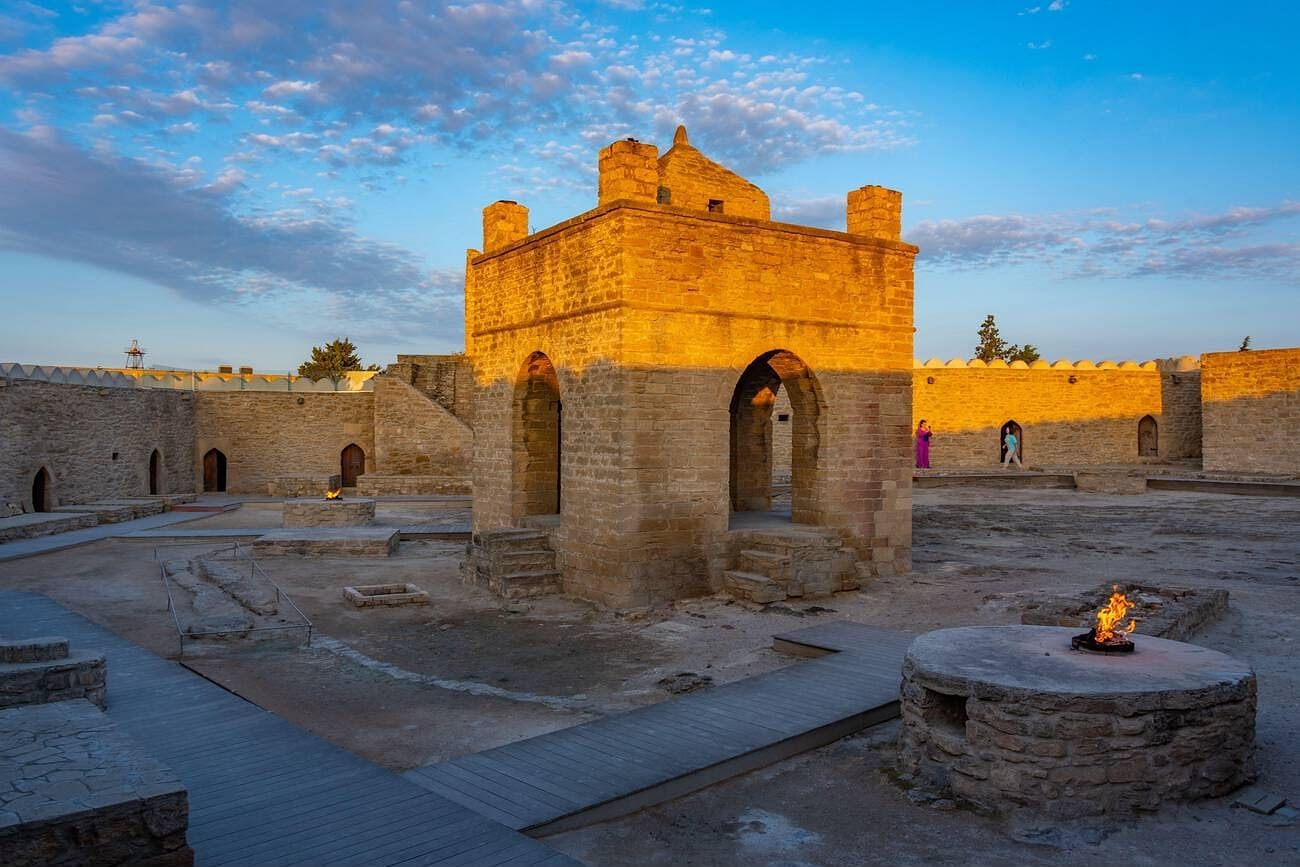
Ateshgah: Baku’s Historic Fire Temple
Table of Contents
Table of Contents
- History of Ateshgah Temple
- Ateshgah’s Religious Significance
- Architecture and Layout of Ateshgah
- Visiting Ateshgah: A Spiritual Experience
- Best Time to Visit Ateshgah
- Places to Visit Near Ateshgah
- Ateshgah in Modern Times
- Conclusion
- Frequently Asked Questions
History of Ateshgah Temple
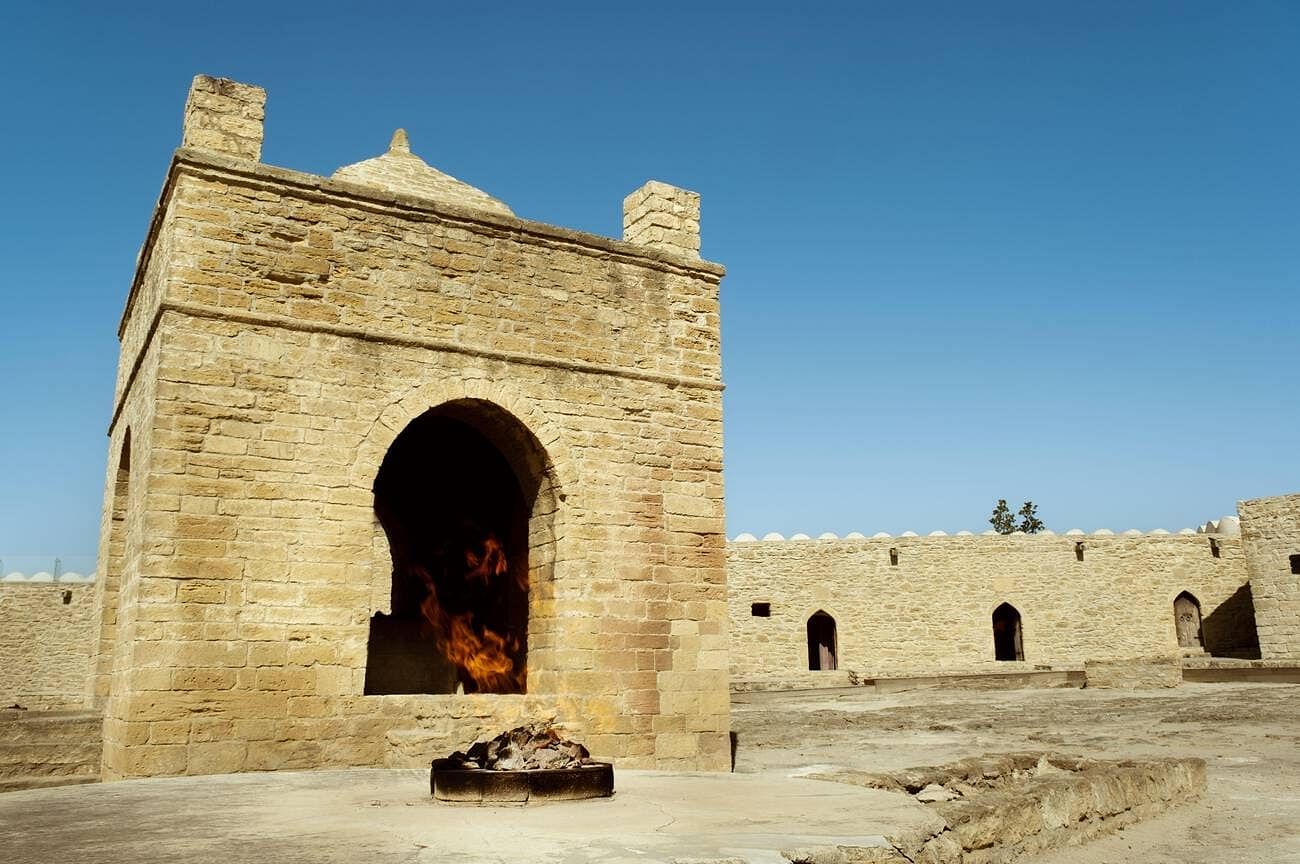
Zoroastrianism flourished in the region around modern-day Azerbaijan for centuries, and the Atashgah Fire Temple in Baku became an important pilgrimage site for its followers. However, over time, as the influence of Zoroastrianism waned in the region, the temple was largely abandoned.
Interestingly, the Ateshgah was later adopted by Hindu traders from India, who arrived in Baku during the 17th and 18th centuries. These Hindu merchants, primarily worshippers of Shiva, recognized the significance of fire in their religion and began using the temple for their rituals. This gave the Ateshgah of Baku its unique identity as a place where both Zoroastrian and Hindu traditions coexisted. The architectural style of the temple also reflects this blend of cultures, with inscriptions in Sanskrit and carvings that point to Hindu influences. You must also visit the Heydar Aliyev Center when you visit Baku.
Suggested Read: Paragliding in Baku
Ateshgah’s Religious Significance
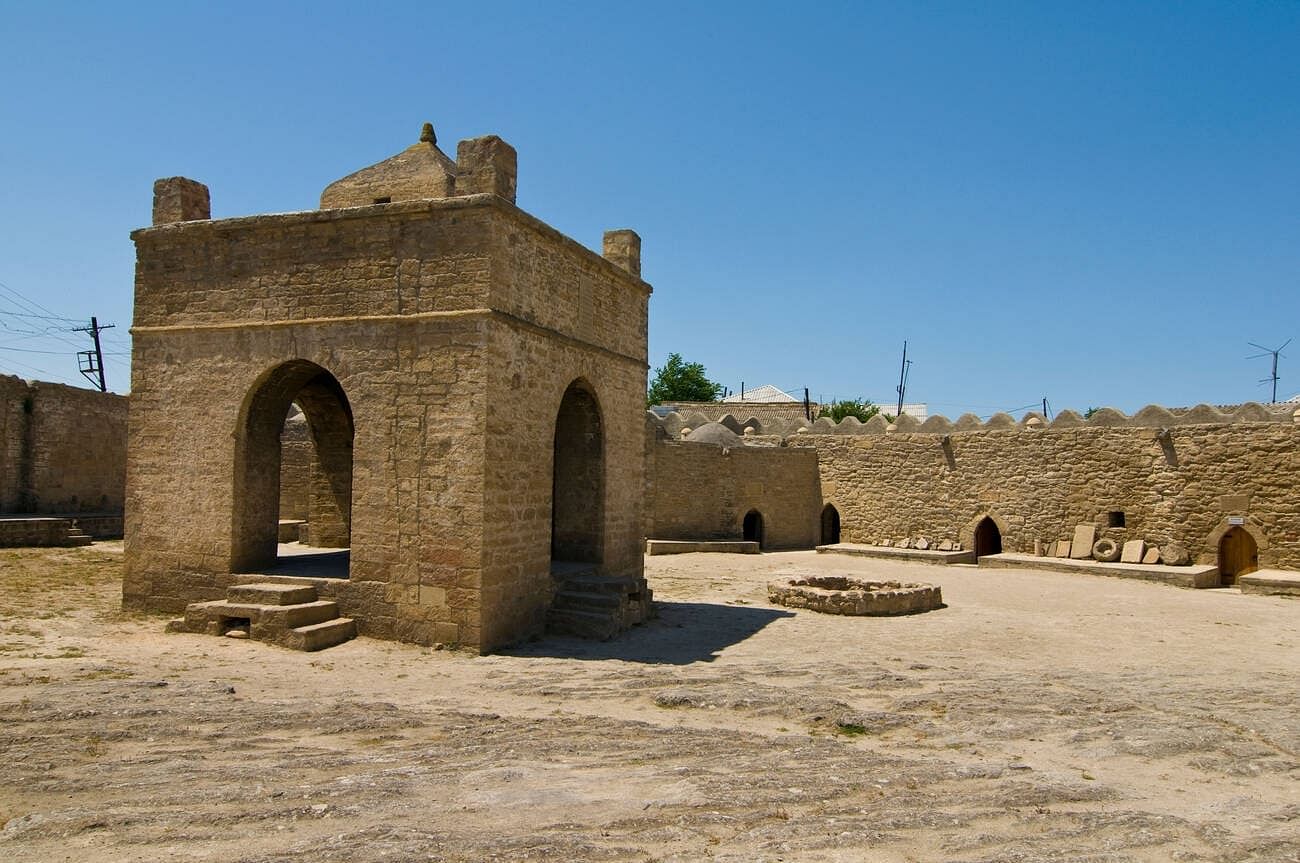
For Hindus, the Ateshgah of Baku became a place dedicated to Lord Shiva, a major deity in Hinduism often associated with destruction and rebirth. In Hindu tradition, fire also holds significant religious importance, particularly in rituals such as Yajna (fire offerings), where it is believed that offerings made to the fire will reach the gods. The dual religious identity of Ateshgah makes it a remarkable place where two distinct faiths found common ground in their reverence for fire.
While the natural gas flames that once burned at Ateshgah have long since gone out due to modern extraction techniques, the Ateshgah Religious Significance remains intact. Today, the temple is no longer an active site of worship, but it continues to be a symbol of religious tolerance and cultural exchange, attracting visitors from around the world.
Suggested Read: Adventure Activities in Baku
Architecture and Layout of Ateshgah
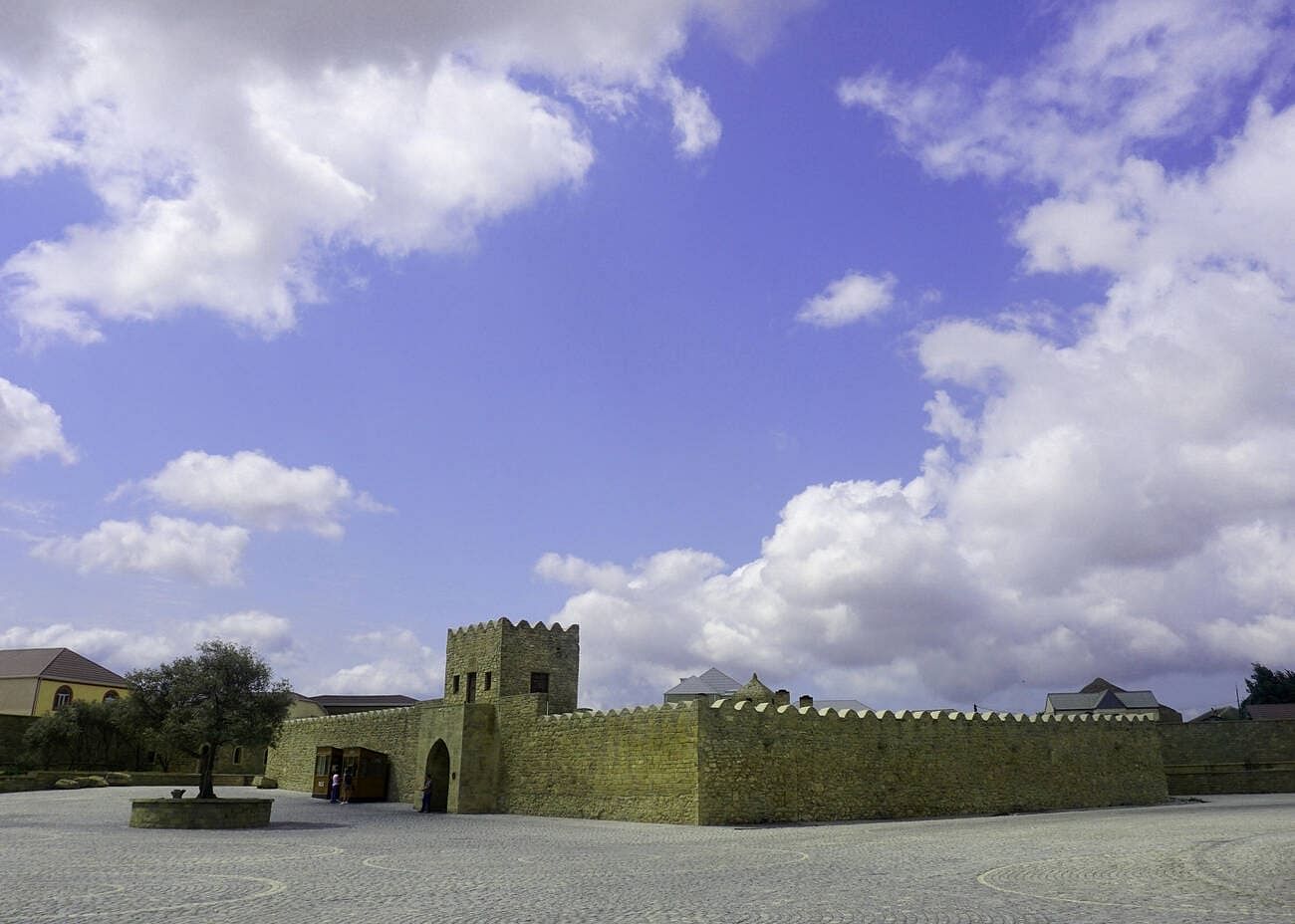
The main altar, where the eternal flame once burned, is located at the heart of the courtyard. It’s a simple yet powerful structure that continues to capture the imagination of visitors. The walls of the Atashgah Fire Temple in Baku are adorned with inscriptions in Sanskrit and Gujarati, highlighting the influence of the Hindu merchants who frequented the temple. The overall design of the temple reflects a blend of Azerbaijani, Persian, and Indian architectural styles, making it a unique landmark in the region.
Suggested Read: Top 7 Beaches In Baku You Must Visit | Best Travel Guide
Visiting Ateshgah: A Spiritual Experience
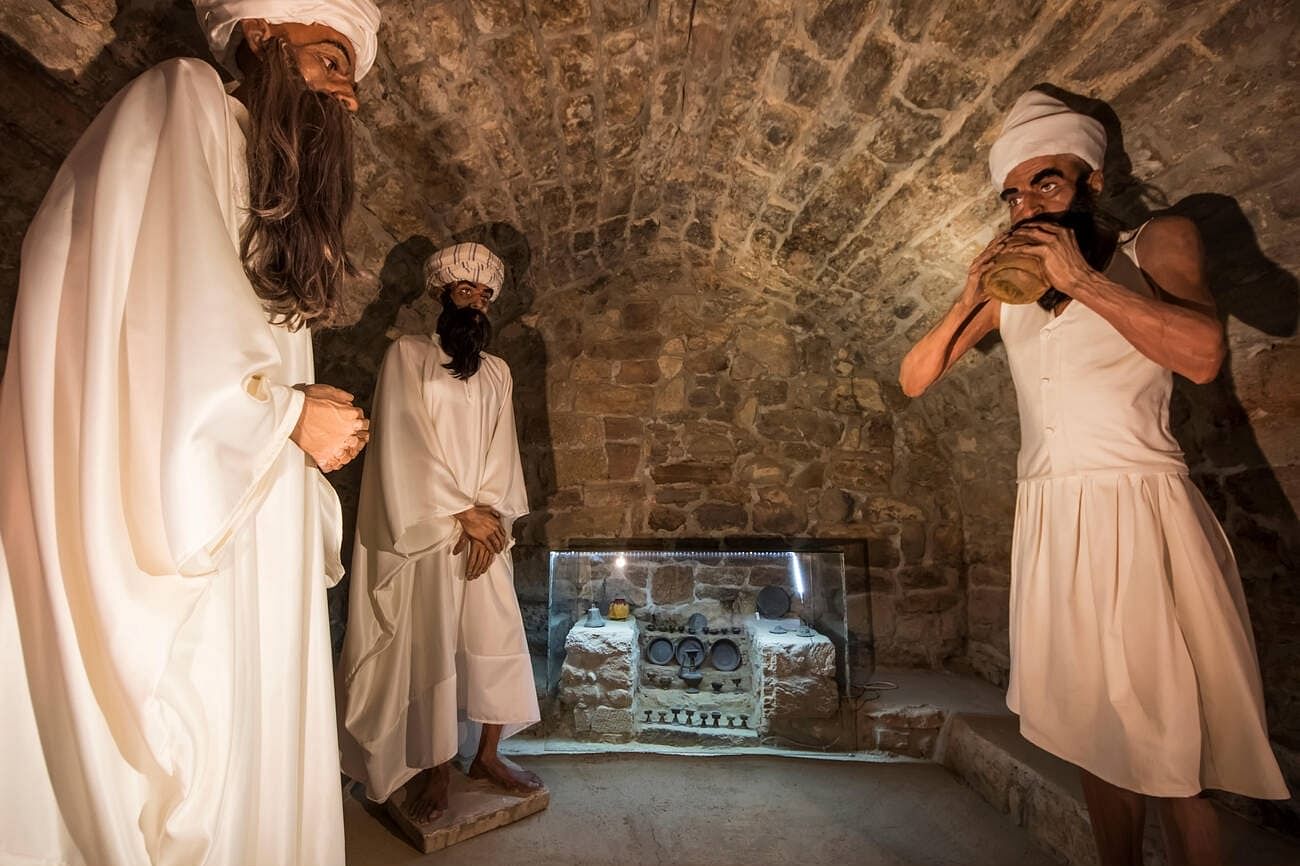
The Atashgah Fire Temple in Baku is about 30 kilometers from the city center, making it an easy day trip for those visiting Baku. The site is well-maintained, and visitors can explore the temple grounds at their own pace. There is ample information available in multiple languages to help tourists understand the cultural and religious significance of the site.
Suggested Read: hiking in Baku
Best Time to Visit Ateshgah
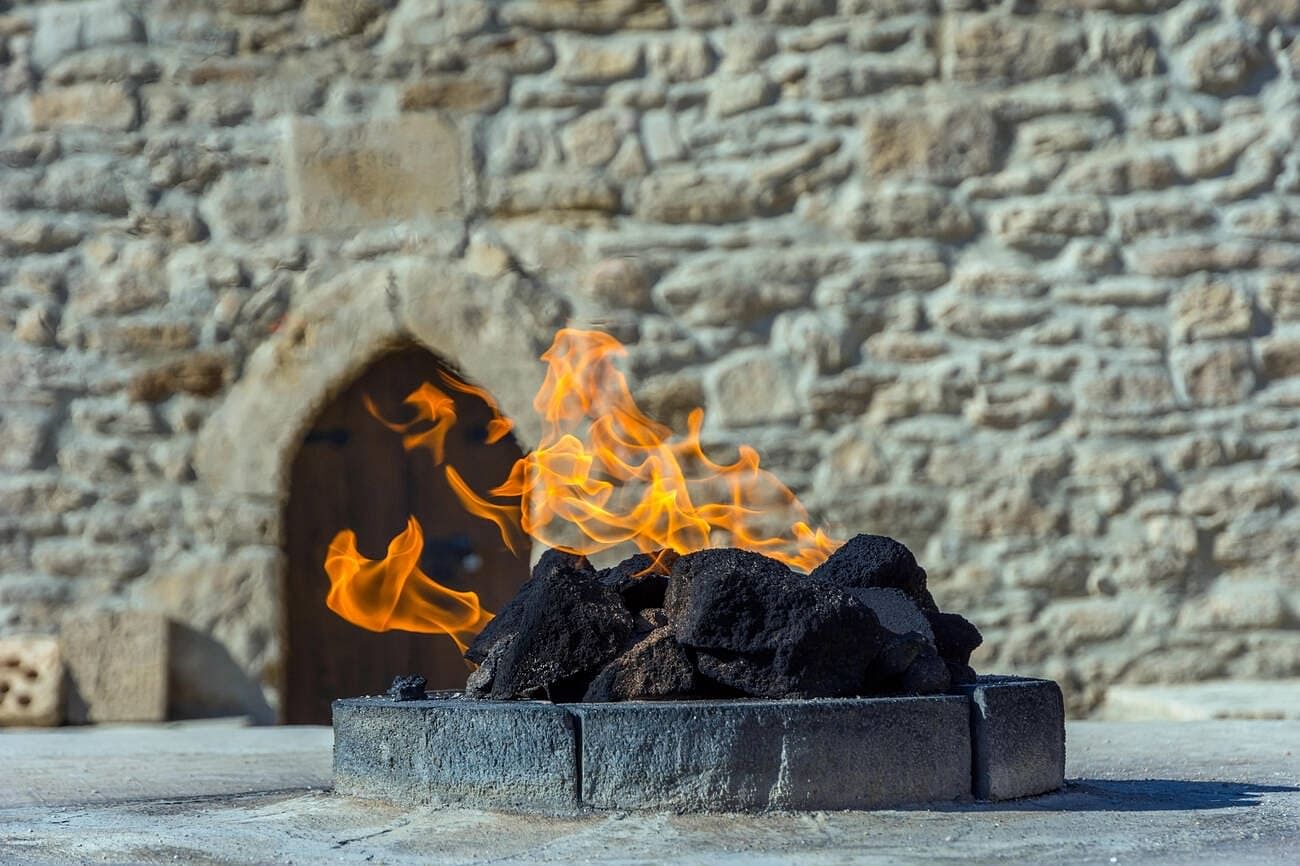
Summers in Baku can be quite hot, and winters, while not extreme, can be cold and windy, especially since Ateshgah is located in an open area with little shelter. For those looking to experience the temple without the crowds, visiting in the early morning or late afternoon is recommended.
Places to Visit Near Ateshgah
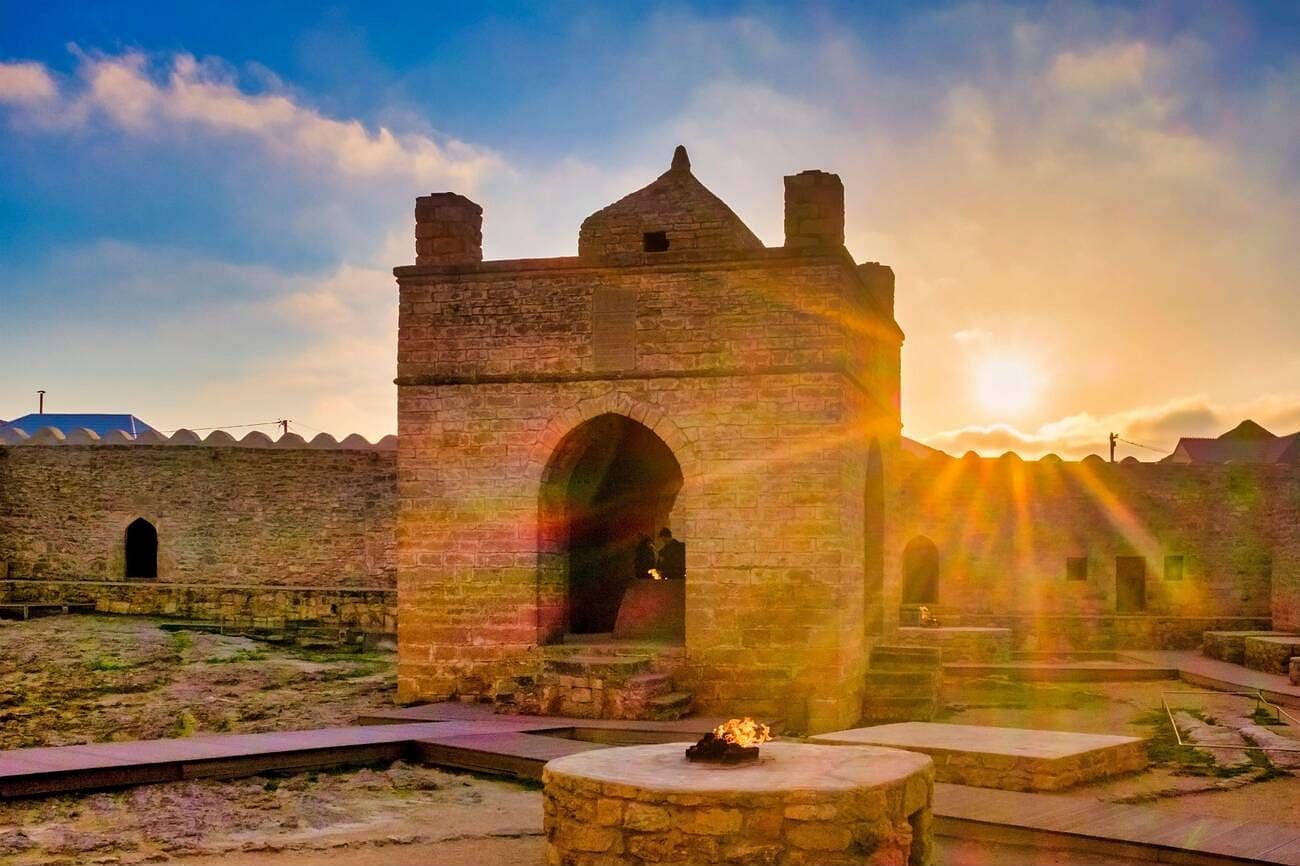
Another nearby attraction is the Gala State Historical Ethnographic Reserve, where you can explore ancient artifacts and learn more about Azerbaijan’s cultural heritage. This open-air museum showcases how people in the region lived centuries ago, greatly complementing your visit to the Atashgah Fire Temple in Baku.
Suggested Read: Restaurants in Baku
Ateshgah in Modern Times
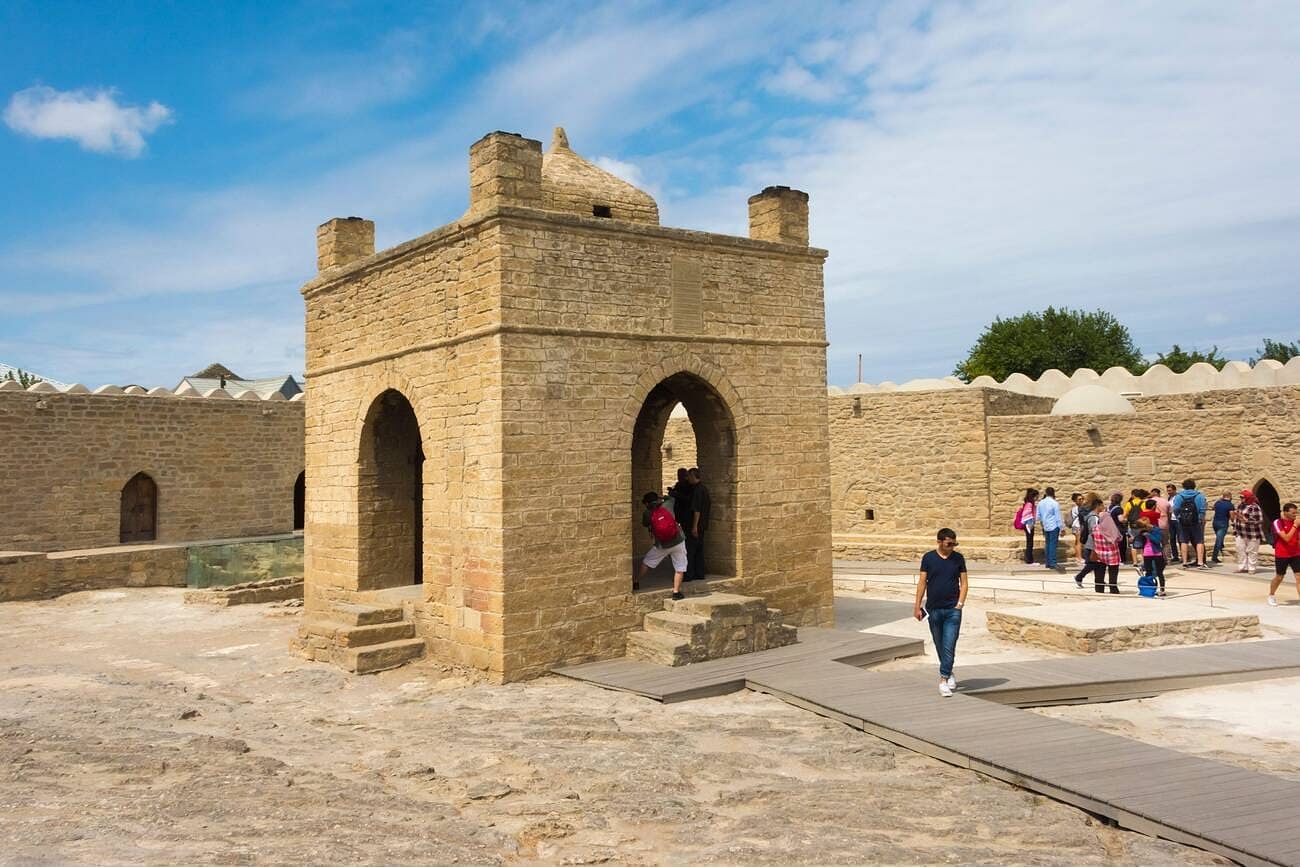
The Ateshgah Religious Significance still resonates with many visitors, as it stands as a symbol of how different cultures and religions can come together in shared reverence for a common element: fire. Whether you’re a history buff, a spiritual seeker, or just someone looking to learn more about the diverse traditions that have shaped Azerbaijan, Baku Ateshgah is a place that should not be missed.
Suggested Read: Teze Bazaar
Conclusion
Today, the Atashgah Fire Temple in Baku stands as a testament to the region’s rich cultural heritage and its role as a crossroads of ancient trade routes. Visitors to the temple can explore its unique architecture, learn about its religious significance, and reflect on the universal power of fire as a symbol of purity, truth, and divinity.
Whether you’re visiting for its spiritual significance, its historical value, or simply to admire the architectural beauty of Baku Ateshgah, this site is sure to leave a lasting impression.
Get exclusive travel insights & updates into your inbox!
*By clicking subscribe you'll receive emails from WanderOn.

Shrutika Parab
★★★★★24 May 2024
“Thank you Team Wanderon for the amazing Ladakh Experience. Right from the point of making the bookings with Mr. Chakshu to the point of completion of the trip received amicable support.

Sonal Shekhar Dash
★★★★★9 May 2024
“I did my first solo trip in India with WanderOn. Initially I was sceptical about their Meghalaya-Kaziranga trip as I didn't have any prior experience with them but the team assured me that it's going to be one of the best experiences of my life.

Archana Awati
★★★★★30 Apr 2024
“In Ladakh, find the perfect blend of culture, adventure, and serenity. December last year I decided that my next trip would be Ladakh but didn’t know how to go about it. I knew I wanted to travel in a group, as I had prior experiences of traveling in a group but wanted an organiser I could trust. Ladakh isn’t like other destinations wherein you need some instructions due to the high altitudes.

Kartik Dilawari
★★★★★4 Jul 2024
“After an amazing trip to Tirthan with WanderOn, I decided to go to Manali-Jispa with them and yet again, the experience was worth every penny. The place was very beautiful and the quality of service was top-notch, the itinerary was very good and the quality of transportation and stays were very good. Had an awesome time there and made some good friends as well. Lastly, our trip captains Priyasha and Rachit managed the entire trip very well and were so fun and made our trip an experience worth remembering.
FAQ'S
01
What is the history of the Hindu temple in Azerbaijan?
The Hindu temple in Azerbaijan, Ateshgah of Baku, was built by Indian traders during the 17th and 18th centuries. It became a place of worship for Hindu merchants, particularly followers of Shiva, blending Hindu and Zoroastrian traditions.
02
Is the Fire Temple in Baku worth visiting?
03
Is Azerbaijan a rich or poor country?
WanderOn Special

WANDERON EXPERIENCES PVT LTD
3rd Floor, Building No-436, Phase IV, Udyog Vihar, Sector-18, Gurugram, Haryana-122015


